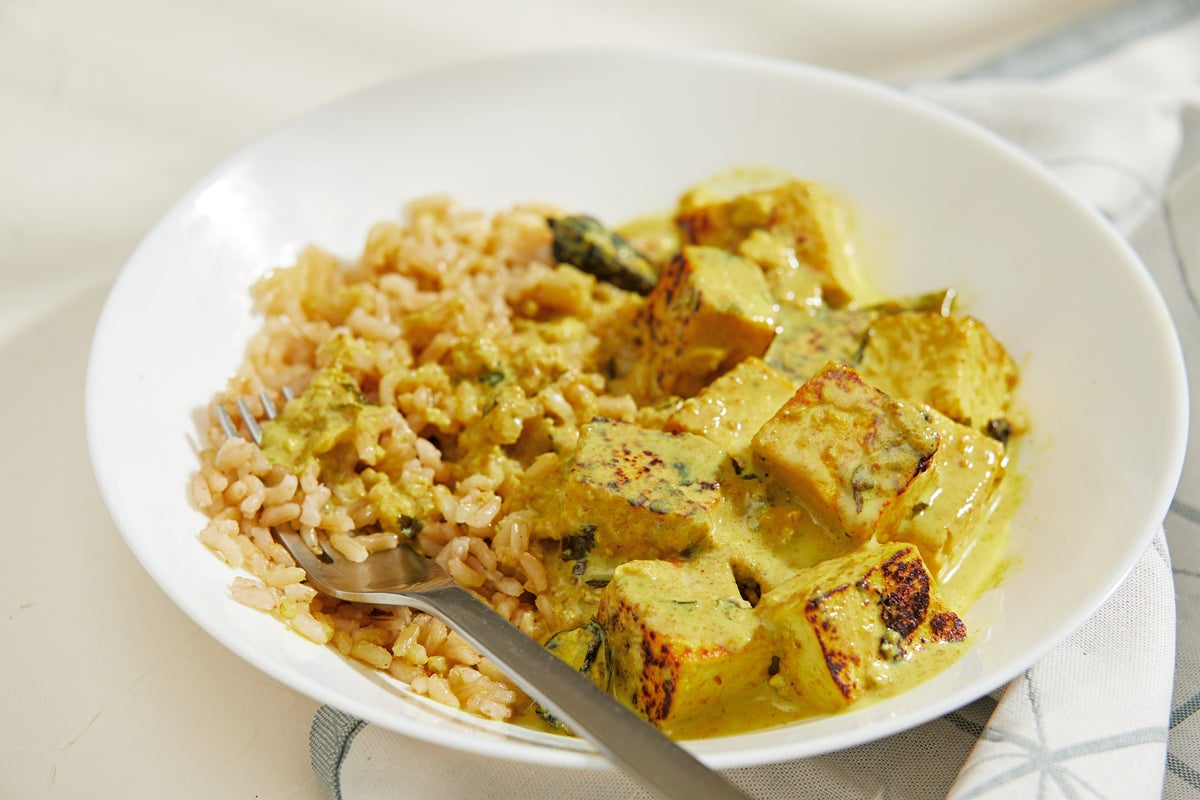
Kashmir loomed large in Romy Gill’s imagination long before she visited.
As the British Indian chef and author writes in her new book, On the Himalayan Trail, she marvelled as a child at the “paradise” she saw in Bollywood movies that were filmed in the remote valley. That was when she was growing up in West Benghal, where she later learned about the culture, religion, language and – perhaps most importantly for her future career – the food of the region from Kashmiri families who worked with her father.
Gill, 50, finally travelled there last year, during the pandemic, to research a book she hopes will inspire readers to discover the region through their kitchens.
Kashmir makes headlines because it is a disputed territory, with India, Pakistan and China fighting over it. Besides its renowned physical beauty, Kashmir is known for violence and turmoil, making it akin to South Asia’s equivalent of the Palestinian territories.
Gill doesn’t shy away from politics entirely in her book; she includes an account of one vegetarian feast she was served at her friend Amit’s home in Srinagar, whose activist grandfather HN Wanchoo was assassinated in 1992. But for the most part, she wants to keep the focus squarely on the glories of Kashmiri cuisine, which is influenced by two communities: Pandits and Muslims. While the dishes of both communities have been influenced by central Asian, Afghan, Persian and Mughal cooking, Gill writes, Pandits cook without onions or garlic and use three ingredients you won’t find much of in Kashmiri Muslim cuisine: asafetida (hing), paneer and yoghurt.
The Pandits, who are Hindus, also boast a long tradition of vegetarianism that has survived in the region, and that’s the source of Gill’s recipe here for chaman kaliya, paneer in yellow gravy. This recipe was inspired by a dish made by her friend Amit’s parents on her visit.
My only quibble is that the term “yellow gravy” might not do justice to the complexity of flavour you get from layering nine spices, some of them whole, with green chillies and simmering them in water before thickening the sauce with milk. When it’s combined with pan-fried paneer and mixed through with aromatic dried fenugreek leaves, “It’s just a bowl of golden yellow deliciousness, isn’t it?” Gill says with a smile during a Zoom call from her home near Bristol and Bath.
Why, yes it is.
When I made it, I was particularly taken with the slight anise-y flavour of ground fennel, the smokiness of black cardamom and the absolutely intoxicatingly earthy, bitter and slightly sweet touch of the dried fenugreek leaves. It took barely 20 minutes to put together, and when I served it to a colleague with a particularly sophisticated palate, his eyes widened and sparkled just like mine did the first time I tasted it. Before he even spoke, that told me everything I needed to know.
Chaman kaliya (paneer in yellow gravy)
Storage notes: Refrigerate leftovers for up to 5 days or freeze for up to 3 months.
Where to buy: Mustard oil, asafetida (hing), dried fenugreek leaves (kasuri methi), black cardamom and Indian green chillis can be found in Indian and some international markets. Paneer can also be found there, as well as in many well-stocked supermarkets.
Active time: 35 minutes | Total time: 45 minutes
Serves: 4
Ingredients:
3 tbsp mustard oil (may substitute neutral vegetable oil, such as sunflower)
450g paneer (may substitute extra-firm tofu, drained and patted dry), cut into cubes
8 green cardamom pods
4 black cardamom pods
4 whole cloves
1 tsp cumin seeds
3 dried bay leaves
2 whole Indian green chiles, such as Kashmiri (may substitute Thai green chillies or serrano chillies), halved lengthwise
1½ tsp ground fennel
1 tsp ground turmeric
1 tsp ground ginger
1 tsp fine salt
½ tsp asafetida powder (hing)
300ml hot water
300ml whole milk (may substitute full-fat coconut milk)
1 tsp dried fenugreek leaves (kasuri methi)
Cooked rice, for serving
Method:
In a large frying pan over medium heat, heat the oil until it shimmers. Add the paneer and fry until lightly browned on all sides, about 2 minutes per side (the paneer tends to sputter in oil; use a splatter guard if needed). Transfer to a plate.
Add the green and black cardamom, cloves, cumin seeds and bay leaves to the pan and cook, stirring, until very fragrant, about 1 minute, then add the chillies, fennel, turmeric, ginger, salt and asafetida. Cook, stirring, until fragrant, about 1 minute, then pour in the hot water.
Increase the heat and bring to a boil, then reduce the heat until the liquid is simmering, add the fried paneer and cook until the water slightly reduces, about 3 minutes. Pour in the milk and cook until the gravy thickens, 8 to 10 minutes.
Stir in the fenugreek leaves, divide among serving bowls and serve hot with rice.
Nutrition information per serving | Calories: 502; total fat: 38g; saturated fat: 19g; cholesterol: 91mg; sodium: 714mg; carbohydrates: 17g; dietary fibre: 3g; sugar: 9g; protein: 32g.
This analysis is an estimate based on available ingredients and this preparation. It should not substitute for a dietitian’s or nutritionist’s advice.
© The Washington Post







